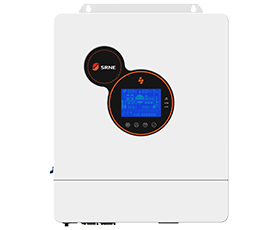The Functions of Solar Street Light Controller
Solar technology applications have been spreading all over the world as utility platforms to power buildings, vehicles, LED street lights and other devices. Among them, LED solar street lights have been applied to many places. Typically, they are equipped with solar street light controller. The intelligent charge controller adopts high-quality, low-loss and long-life components to ensure reliable performance, so that the solar street light system can work normally for a long time and the maintenance cost of the system can be reduced.
In this article, we will talk about the functions of solar street light controller.
The solar controller is the heart of the solar system. This device decides when to switch on or off the lighting and charging. Smart controllers have built in functionalities to control lighting, dimming and battery charging. The smart controller prevents the solar battery from overcharging and undercharging. By receiving the energy from solar panels it continuously charges the battery during the day. During the night the controller supplies the stored power to run the LED street lights. Smart controllers can support single load or multiple loads.
Smart solar controllers provide excellent energy generation, performance optimization and monitoring of each street light unit via cloud based software. The smart controller has a built-in communication network and dedicated software for control and proactive maintenance of the entire street light network to achieve the highest LED light performance 24/7, 365 days per year.
The basic function of the solar street light controller is of course controlling. When the solar panel absorbs the solar energy, the solar panel will charge the battery. At this time, the controller will automatically detect the charging voltage and output the voltage to the solar street light, so that it will make the solar street light work.
When the sun shines on the solar panel, the solar panel will charge the battery, and its voltage is very unstable at this time. It may shorten the service life of the battery and may even cause damage to the battery if the solar panel directly charge the battery. The controller has the voltage stabilizing function, which can keep the input voltage constant.
The solar street light controller also has boosting voltage function, that is, when the controller cannot detect the output voltage, the solar street light controller controls the output voltage from the output terminal. If the voltage of the battery is 24V, but it needs 36V to light up, the controller will then boost the voltage to bring the battery to a level where the light can light up.
SRNE also has solar street light controller product series, which is of high quality and has great performance. Our solar street light controllers have been sold to many countries and gained compliments from our customers.
Take MPPT LED Solar Street Light Controller DM200 as an example. The following are the main features of this controller.
1. With MPPT technology, the controller has higher response speed and tracking efficiency, thus significantly improving the energy utilization efficiency of solar panels.
2. Lead-acid battery and lithium battery are available; operating parameters can be set by remote control.
3. Temperature compensation function and multi-stage constant voltage charging for lead-acid battery.
4. Load power and time control.
5. Battery charge and discharge temperature protection and setting.
6. Intelligent power mode: The load power can automatically adjust according to the battery level.
7. High-precision digital step-up voltage and constant current control algorithm: ensure high efficiency and high constant current accuracy.
8. Infrared remote control: allow for parameters setting and status checking.
9. Provide battery/PV reverse electrode protection, LED short-circuit, open-circuit, and limited power protection, etc.
10. With metal outer shell and IP67 waterproof rating, the product can function well in various tough situations.



































































































